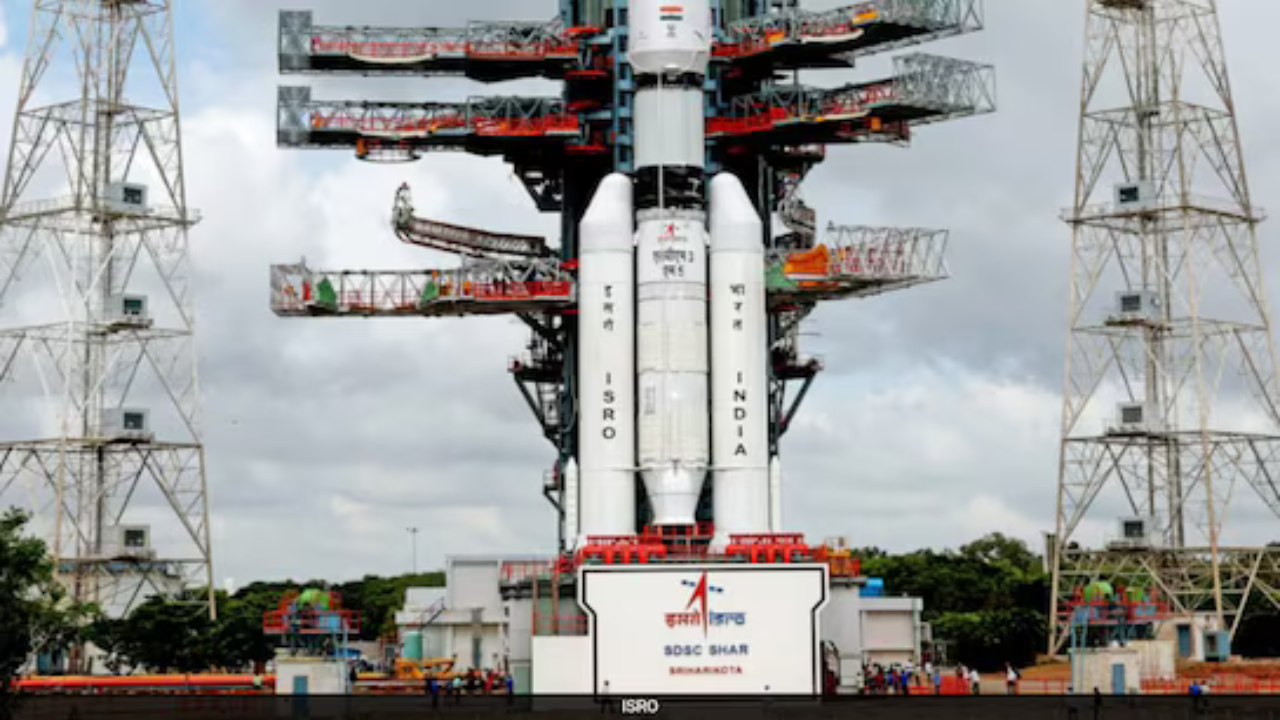 English
English

India is gearing up for a major milestone in space technology as ISRO prepares to launch its heaviest communication satellite, CMS-03, aboard the powerful LVM3-M5 ‘Bahubali’ rocket. What makes this mission crucial for India’s defence and communication future?

Live telecast begins 4:56 PM IST on ISRO’s official channels.
Sriharikota: The Indian Space Research Organisation (ISRO) is once again in the global spotlight. The agency is ready to launch CMS-03, the nation’s heaviest and most advanced communication satellite, aboard its mightiest launch vehicle, the LVM3-M5, famously dubbed ‘Bahubali’ for its strength and payload capacity.
The launch is scheduled for Sunday, November 2, 2025, at 5:26 PM (IST) from the Satish Dhawan Space Centre, Sriharikota. This will mark another defining chapter in India’s self-reliant space journey, following the remarkable success of Chandrayaan-3 and the Aditya-L1 solar mission.
Weighing approximately 4,410 kilograms, CMS-03 is the most massive communication satellite ever designed and launched by India. Once placed into its intended Geosynchronous Transfer Orbit (GTO), the satellite will expand India’s communication footprint across land, air, and ocean, including remote maritime zones that were previously hard to reach.
The satellite’s advanced payload will deliver secure, multi-band communication channels, vital for the Indian Armed Forces, maritime surveillance, and disaster management authorities. It is expected to play a crucial role in ensuring uninterrupted connectivity even under extreme conditions such as cyclones, deep-sea missions, and strategic defence operations.
NASA-ISRO’s NISAR satellite launched for advanced Earth observation
The Launch Vehicle Mark-3 (LVM3), nicknamed ‘Bahubali’, is ISRO’s pride — a 43.5-meter-tall, three-stage heavy-lift rocket designed entirely in India. It represents decades of technological evolution in propulsion and payload integration.
Technical Highlights:
This configuration allows the vehicle to carry extremely heavy payloads and precisely insert them into high orbits — a capability only a handful of spacefaring nations possess.
How will NASA-ISRO’s historic mission NISAR revolutionize Earth monitoring?
The CMS-03 mission represents far more than another satellite launch, it is a strategic leap forward. With communication and defence systems increasingly dependent on satellite-based networks, CMS-03 will strengthen secure data transmission, maritime connectivity, and real-time surveillance.
The mission also helps India achieve greater self-reliance, reducing dependence on commercial foreign launches. Previously, India had to rely on Arianespace for sending heavy satellites to orbit. Now, the LVM3 enables India to do so independently, a milestone that saves millions of dollars and boosts indigenous capability.
According to ISRO scientists, CMS-03 will also assist in disaster response operations, ensuring uninterrupted emergency communication during floods, cyclones, or earthquakes when terrestrial networks fail.
The CMS-03 mission follows ISRO’s recent wave of success. After the historic Chandrayaan-3 soft landing on the Moon’s south pole in August 2023 and the successful Aditya-L1 solar mission in 2024, ISRO is demonstrating its growing mastery across the space spectrum — from planetary exploration to heavy satellite launches.
The same LVM3 rocket that carried Chandrayaan-3 is being used again, proving the reliability and versatility of this launch vehicle. Insights gained from today’s mission will also feed directly into preparations for Gaganyaan, India’s first crewed space mission, planned for the coming years.
The liftoff of LVM3-M5 carrying CMS-03 can be watched live by citizens and space enthusiasts across the globe.
Viewers will get real-time visuals of countdown operations, rocket ignition, stage separation, and orbital injection — accompanied by live commentary from ISRO scientists.
Beyond its immediate purpose, CMS-03 marks another stepping stone toward India’s long-term vision of self-reliant, high-capacity space technology. Data from this mission will contribute to the refinement of Gaganyaan systems, improve cryogenic engine performance, and enhance satellite integration techniques for upcoming missions such as NISAR, GSLV Mk III upgrades, and interplanetary probes.
No related posts found.